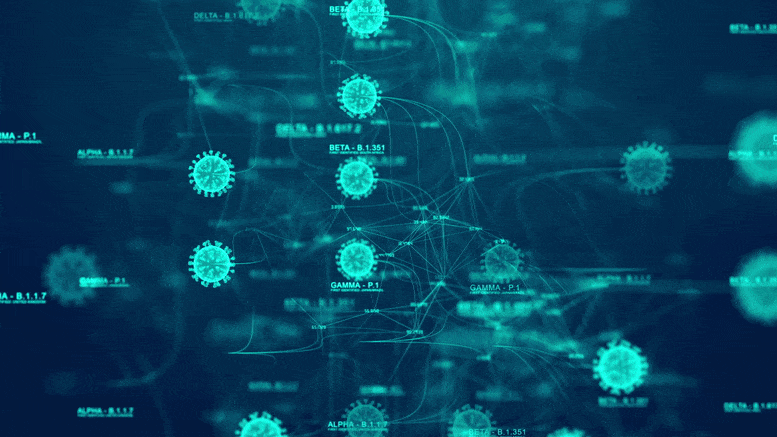
The list of SARS-CoV-2 variants – each with its own unique qualities that give it an edge – just keeps growing.
“The Conversation” Editor’s note: The omicron variant of SARS-CoV-2, the virus that causes COVID-19, has fueled a rapid surge in cases globally. We asked a team of virologists and immunologists from the University of Colorado Boulder to weigh in on some of the pressing questions that people are asking about the new variant.
How is omicron different from previous variants?
There are two key differences between omicron and previous variants of the SARS-CoV-2 virus that emerged in late 2019. Early data suggests that omicron cases are milder than infections caused by the delta variant. On the flip side, omicron is far more transmissible – meaning it spreads easier – than previous variants. It can be confusing to think about the overall effects of a milder virus that is also far more infectious.
When the delta variant became dominant and displaced alpha in the summer of 2021, it managed to do so because it was between 40% and 60% more transmissible. Now, the omicron variant is even more transmissible than delta.
It’s difficult to put numbers around how intrinsically more transmissible one variant is than another, because human behaviors and vaccination percentages are constantly in flux. Those factors, together with transmissibility, affect how a virus fares in a population.
In comparison with the original strain of SARS-CoV-2, omicron contains 72 mutations throughout its genome. Some of these mutations account for the complex new features that characterize this variant. Half of those changes are in the spike protein, the critical surface protein that enables the virus to latch on and infect cells. It is also the key virus feature that is recognized by the human immune system.
Why is omicron spreading so quickly?
Initial studies suggest that omicron is more effective at reproducing in the upper airways, including the nose, throat, and mouth, than earlier variants, making it more similar to a common cold virus. If data from these preliminary studies holds up, then it may help explain omicron’s high transmissibility: Viruses replicating in the upper airways may spread more easily, although the reasons for this are not completely understood.
In addition, omicron is often able to evade existing immunity long enough to start an infection, cause symptoms and transmit onward to the next person. This explains why reinfections and vaccine breakthrough infections seem to be more common with omicron.
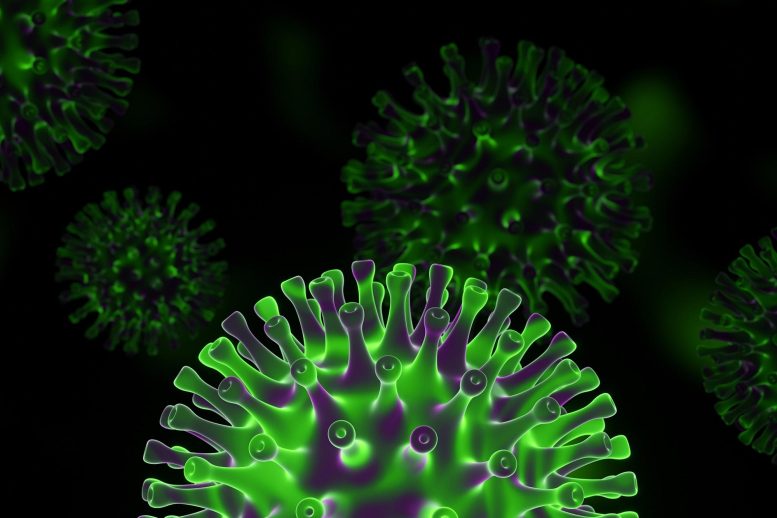
Omicron contains a large number of mutations and is much more transmissible than earlier variants of the SARS-CoV-2 virus.
Those properties, and the timing of this variant emerging during the holiday season, resulted in the extraordinary surge in COVID-19 infections in the U.S. Add in wintertime – which brought people indoors – along with pandemic fatigue, and you have the perfect storm for rapid transmission.
The good news is that vaccination and vaccine boosters nevertheless provide good protection against severe disease and hospitalization. But given the current number of cases, that still means a lot of illnesses, hospitalizations and deaths in the weeks to come.
Could omicron move the population closer to herd immunity?
Herd immunity occurs when enough people have immunity to a virus that it no longer spreads well. It is only possible when two conditions are met. First, a large fraction of the population must be vaccinated or recovered from prior infection. Second, vaccination or prior infection must confer enough immunity to block or slow future infections. Will vaccination campaigns, combined with widespread omicron infection, be enough to bring herd immunity?
Three issues complicate the hope of achieving a long-term herd immunity after omicron. The first is that immunity naturally wanes over time, regardless of whether it comes from a vaccine or prior infection. It is not yet clear how long after infection or vaccination immunity to this virus lasts, since SARS-CoV-2 has been infecting humans for only two years. Eventually, controlled studies will be able to determine this.
Second, children younger than age 5 are not yet eligible for COVID-19 vaccines, and new susceptible children are born every day. So, until all age groups are eligible for vaccination, there will likely be ongoing transmission in kids.
And third, we can’t rule out that new variants could escape existing immunity. As omicron has shown, infection with one variant doesn’t guarantee protection against infection by future variants.
Together, these three factors suggest that even if a large enough fraction of the population recovers from omicron, long-term herd immunity is unlikely. These are the same reasons that humans never achieve long-lasting herd immunity to influenza and have to get a new flu vaccine each year.
It’s important to remember that, with all variants to date, most of the people who are hospitalized for COVID-19 are unvaccinated. This shows that vaccines are an effective tool for reducing disease severity and can be beneficial even against new variants.
Where do new variants like omicron come from?
When viruses make more copies of themselves inside of human cells, they make mistakes in that process – mutations – that alter their genetic code. Most of these mutations will not be beneficial to the virus. However, in some instances, a virus hits on a jackpot of one or more beneficial mutations that fuel its spread through a population. The alpha variant possessed some mutations in the spike protein that made it easier for viruses to infect cells. The delta variant had additional mutations that improved viral spread. Omicron, with its staggering number of mutations, is a true oddity. It’s rare for a coronavirus to rapidly accumulate so many mutations in its genome.
The origins of omicron are still poorly understood. One prevailing theory is that an immunocompromised person was infected with a coronavirus for an extended period of time, leading to accelerated viral evolution. Another theory speculates that omicron could have evolved in another animal species and then reinfected humans. Alternatively, omicron could have evolved gradually in a location with poor sequencing surveillance. There is still much more that needs to be understood about the factors that led to the emergence of this highly mutated variant.
Could omicron mutate to become more deadly?
The variants that have risen to prominence have done so because they contain advantageous mutations for the coronavirus. We are essentially witnessing Darwinian evolution – survival of the fittest – in real time. Variants with beneficial mutations, such as those providing escape from antibodies or shorter incubation periods, are rapidly displacing their less fit predecessors.
The most important thing to remember about virus evolution is that natural selection favors variants that spread better than other variants. The great news is that more pathogenic – or dangerous – variants are less likely to spread well. This is because individuals who feel particularly sick tend to naturally self-isolate, reducing the virus’s chance to transmit.
Also good news is that, because infection with one variant provides partial immunity to others, omicron’s rapid spread has brought on delta’s swift decline.
At this point it is expected that all new variants that spread widely – so-called variants of concern – will continue to be highly transmissible.
What about the buzz around ‘deltacron’ and ‘flurona’?
In early January 2022, researchers in Cyprus reported cases of COVID-19 infections containing sequences of both omicron and delta, dubbed “deltacron.” However, other scientists are speculating that this is nothing more than a laboratory contaminant – an omicron sample contaminated with delta. While more details are needed, as of now, there is not cause for alarm over this possible hybrid because it has not been commonly observed.
And in recent weeks the term “flurona” has surfaced, referring to an individual who is infected with both influenza virus and a coronavirus at the same time. While rare, such situations do happen, and it’s important that you reduce your risk by receiving both the influenza and COVID-19 vaccines. But it’s important to note that flurona is not a new combination of the flu and coronavirus genomes, making this term a bit of a misnomer.
Written by:
- Sara Sawyer – Professor of Molecular, Cellular and Developmental Biology, University of Colorado Boulder
- Arturo Barbachano-Guerrero – Postdoctoral Fellow in Virology, University of Colorado Boulder
- Cody Warren – Postdoctoral Fellow in Virology and Immunology, University of Colorado Boulder
This article was first published in The Conversation.![]()

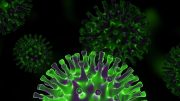
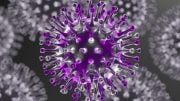


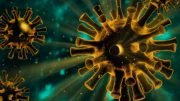
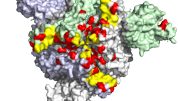
Interesting
Well written Sara and friends.
Some Thoughts and questions for Consideration.
1. Early in the Virus emergence one nation tried the herd immunity strategy and found that mortality was much higher than prevention strategy adopted by other europen nations.
2. Mutation on the Virus Genome beyond the spike protien implies the structure of the Virus and its ability to fuse with the ACE 2 Cell may be enhanced (as in the case of the Omicron Variant) spreading rapidly globally but currently primarily in the west. It is possible that the structure of the omicron variant reduces mortality. The fact that it was able to infect implies that the fusion with the Ace 2 cell does happen, but less frequently, as it is reported to be milder. The fact that it infects some of the vaccinated who are reportedly getting infected, regardless of the vaccine doses needs to be understood. The Fact that it infects the immune compromised is understandable. Immune compromised needs to be redefined much more accurately . Immunity is not generic in nature. Immunity is individual in nature and needs to be much better understood. The devil isin the details, is my opinion.
3.The process of Defender soldiers fighting any type of infection is extremely interesting Science. The Human Ecoststem defence system causes the point of entry of the wound to become inflamed. Never understood the role of Interluken in the inflamation process nor interferron for cures of various earlier diseaes like HIV ( Human Immuno Deficincy ) Virus.
4.Inflamation is a symptom of the battle raging between the infecting agent attempting entry into the human ecosystem and the guman ecosystem defender cells. Preventive strategies means denying entry to the infecting agent. Vaccination is a means adopted to prevent entry of the infecting agent, after the fact . As long as the populaation of unvaccinated people with ” Immune Compromised” nod non-compromised individuals exist , the current dominant Variant has an opportunity to replicate with errors in the human , animal , mammalian ecosystems it has infected.
5. The use of Statistics and numbers to determine the probability and like future predictability of infections and the ability for a deadly variant to emerge as a result of fresh infections is limited currently due to the complexity of both the known factors and unknown behaviour patterns of the Human Agent, animal , mammmalian agents being infected.
6.Acual numbers and dominant Genome prevalent in various populations may be useful. It is a possibility that the Waves we are observing in various nations, may be akin to the mexican wave we see in football stadiums. The Virus knows no national borders and the spread of the various variants of concern may be at various levels of progression in the local community. This means that at a national level the concaneted data are actually nice to know numbers but not useful for public health decision-making.
7.Infection and Inffectivity rates happen from person to person. Preventing spread till we can understand the actual mechanism of the spread and why the innfectivity rates would increase is of critical importance. Mortality is a result of some of the sub-systems of the human ecosystem getting overwhelmed and failing resulting in various organ failures Lagging Indicators. What are the Leading Indicators being used tomonitor the Virusand its impact?
7. The fact that it is infecting little children is extremely worrying. They generally have a much stronger immune system after a certain age, as th eimmunity curve should normally increase with time and then decline as the Cells with shorter tails predominate than the cells with longer tails. Telomers.
Views expressed are personal and not binding on anyone.
who believes this garbage anymore, these stupid opinion pieces are full of misleading information. how about do some REAL JOURNALISM and find out why this virus is still around or why these supposed variants keep rocking up and why the there are research papers proving these ‘vaccines’ are damaging peoples immune systems.